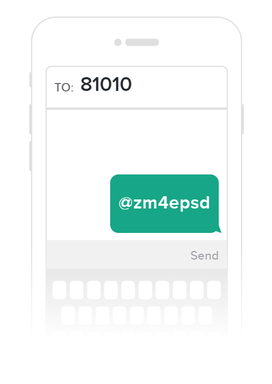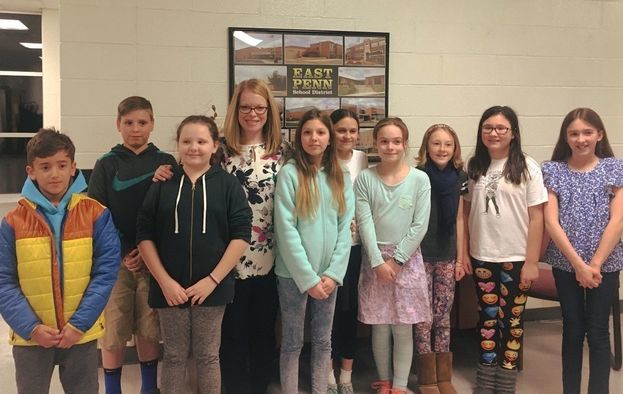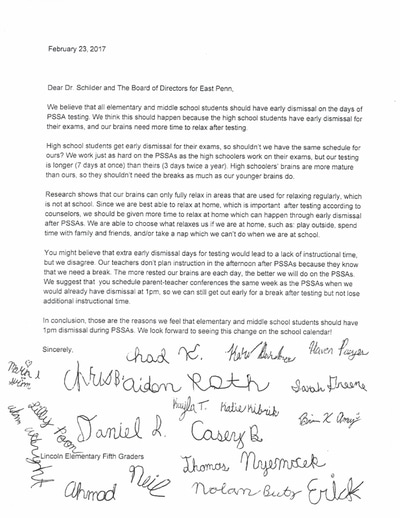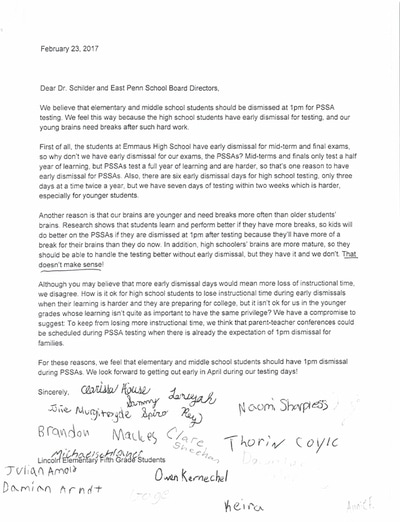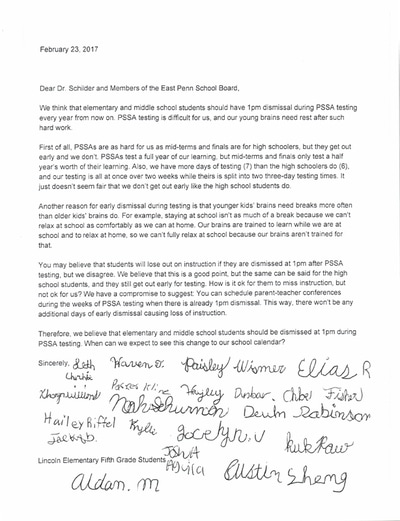|
Do you want to stay in the loop on what is happening in our school district? If so, please sign up for my shiny new text message system (it also works with email, if you prefer). I'll let you know when there is important information or news you should know. You can sign up by simply texting @zm4epsd to 81010 or 610-816-6523 from your phone, or by visiting https://www.remind.com/join/zm4epsd. Why am I doing this? I've had lots of discussions with community members over the last two months about the possibility of full day kindergarten in our district. People have shared many different opinions, but everyone I've spoken to has agreed they wished there was a way to learn about these kinds of issues before the decisions were already made. I've asked everyone I've spoken to how I might help keep the community better informed, and offering text alerts was one suggestion I received. So I'm going to try it out! I understand that many people have busy lives, do not necessarily use social media regularly, and don't have time to keep up with blogs and newsletters. Short text updates are the perfect way to keep on top of school issues without having to bother with all of these things. And here is some fine print: I promise not to spam you with lots of messages, probably no more than 1-3 per month and often less. I'm using the same system that many teachers use to keep in touch with students and parents. It allows text messages without ever directly sharing telephone numbers. You can also easily start or stop the alerts at any time. Please keep in mind too that I am offering this as a service to the community, as your elected school board representative. The texts (and my opinions) are my own, and don't necessarily reflect the official position of the school board or the East Penn School District. There is no charge for this service, but obviously regular text and data rates of your phone plan may apply. And for those of you who don't already know, I also share regular updates about the district via my blog, Facebook, and Twitter. So sign up for text alerts right now by texting @zm4epsd to 610-816-6523 or by visiting https://www.remind.com/join/zm4epsd. If you know someone else who might benefit from this too, you can print the instruction sheet below to share with them. Let me know how you like how it does (or doesn't) work!
0 Comments
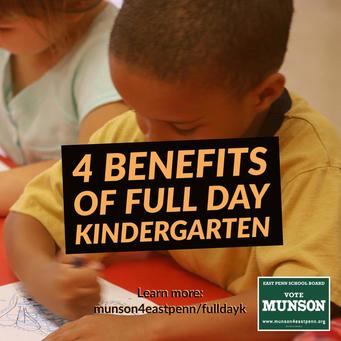
The East Penn School Board will vote soon on whether to offer full day kindergarten to all families in the district. I’m strongly in favor of doing so. Here are four key benefits of full day kindergarten to our community:
1. Improves Readiness for Elementary School (and Beyond) Any good house requires a strong foundation. Even the most expensive, carefully designed home will collapse if it’s built on a cracked or crumbling base. Education is no different. We are spending a great deal of money and effort on improving curriculum and educational programs in the elementary, middle, and high school levels. But these improvements can’t pay dividends if students don’t start with a good school foundation. Full day kindergarten can provide this strong starting point far more effectively than our current half day programs. It increases the odds of students being able to read by the third grade, a key marker of future success in school. Would you be surprised to learn that some children in East Penn come into kindergarten having never even held a pencil or crayon? The time and more personalized attention afforded to full day kindergarten students begins to make up for these kinds of deficits, while also improving the readiness of all our children to be successful learners. 2. Creates Time for Purposive Play In a world of increasing pressure from standardized testing, and ever more specialized standards, it is easy to forget that children need time to absorb new ideas, learn more when lessons are active and playful, and learn most deeply when subjects are integrated and connected to one another. Half day kindergarten simply doesn’t provide enough time for this kind of education. I am impressed with the “living classroom” model for full day kindergarten. Our youngest students learn while they play. Full day kindergarten provides the time needed to incorporate all subjects daily into their activities, and the kids get the time they need to connect different subjects in meaningful ways. 3. Research Shows it Works Evaluating the effects of full day kindergarten programs is more complex than it might seem, because there are so many factors that impact student success. Overall, however, there is a growing body of evidence that full day kindergarten is better for the academic development of students than half day programs, whether measured immediately after kindergarten or measured years later. Such research ranges for case studies of individual school districts all the way to national data that includes information on tens of thousands of different kids (for examples, see here and here). Even in our own community, there is evidence of an immediate payoff from full day programs. The Parkland School District began full day kindergarten last year and already the proportion of their 550 kindergarten students who pass a diagnostic test on early reading skills has jumped from 65% to 80%. 4. Ensures Fairness to all Kids in the District East Penn actually has full day kindergarten already...but only for 2 of its 22 kindergarten classes. The full day programs at Lincoln and Alburtis are highly regarded and sought after by parents. The lucky few students who attend these full day programs go through a hidden admissions process, lotteries, and sometimes long waiting lists. This is unfair to the vast majority of students who could benefit from a full day program. It should be available to everyone in the district. My support of full day kindergarten is not one I come to lightly; my opinion is based on talking to many people in the district about the issue, researching it on my own, reading what published studies say about the advantages and costs of such programs, and participating in three formal school board presentations and discussions on the issue over the last eighteen months. On the basis of this work, I’ve come to the conclusion that full day kindergarten is right for our district. What do you think? This is one of several posts on the full day kindergarten proposal. You can learn more at:
Want to share a short video summary? Here ya go! A group of 5th grade students from Lincoln Elementary spoke at the school board meeting this past Monday. They had worked with their teacher Mrs. Blose to write essays urging the superintendent and the board to allow for early dismissal for elementary students taking the PSSAs, just like the current practice for high school students taking midterms and finals.
It was great to read their well crafted letters, as well as see their poise as they presented the board with their key arguments. They set a great example to everyone for how to get involved in shaping district policies. I hope you'll take a moment to read their letters below (you can click on each for a closer view). 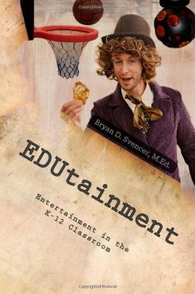 I've written several times now about the need for innovative approaches to education that recognize and embrace the information revolution. There are certainly teachers that are meeting this challenge. There is a growing movement of educators adopting "flipped classrooms" in which traditional classroom lessons and traditional homework assignments are inverted: homework consists of watching lectures or reading explanations at home, and classroom time is spent practicing what was learned at home in problem-solving sessions. The inverted classroom approach takes advantage of technological innovations such as widespread internet access and online video, makes increased use of teacher expertise in helping students work through material at their own pace, and more closely mirrors the new kinds of job skills students will need once they graduate. Of course, this isn't the only approach that can work. Right here in our own district Brian Svencer-- a 4th grade teacher at Lincoln Elementary-- has written a book about his high-energy approach to the classroom that engages students by integrating traditional curricular content into new media and forms of entertainment students already enjoy and are comfortable with. He will be discussing his approach on The Breaking Free Show this Monday (October 21st) at 1pm if you want to learn more (or call into the show: 919-518-9773).
Both of these examples of teaching innovation rely on the creativity and professionalism of teachers. Ultimately, no one "method" will be right for every teacher, or every student, or every classroom. What we need most is highly intelligent, motivated teachers who can adapt and excel in a changing educational environment. And as much as I am grateful for the many excellent teachers we have in our district (my own children have had several), I also know we can do even better. Dr. Mehta, at Harvard's Graduate School of Education, has commented on the ways in which improved teacher training and professionalization will translate into improved public education (full disclosure: Dr. Mehta and I were colleagues in graduate school). He notes that teachers in some of the world's best public school systems-- in places like Japan, Finland, and Canada-- are drawn primarily from the top third of their college classes. By contrast, most teachers in the United States come from the bottom 60 percent. And there is no rigorous professional licensing system for teachers in this country akin to that in fields like medicine, law, engineering, and architecture. Transforming public education to meet the demands of the information revolution will depend, in part, on our ability to transform teacher education, as well as our willingness to treat teachers (and have teachers respond) as the full professionals that they are. We need to raise the bar.  photo credit: ATENCION: via photopin cc photo credit: ATENCION: via photopin cc As I go door to door, concern over the new Common Core standards is one of the most frequent issues raised by the people I meet. I've learned a great deal these last few months about Common Core by talking to community members, asking questions of educational professionals, and research into its history on my own. I am a skeptic of Common Core standards based on what I've learned. There is no research demonstrating the standards will improve the quality of education in our classrooms. And they are likely to contribute to the ongoing problem of relying on high-stakes standardized testing in the schools. I may write more about these problems in a future post. But to be honest, right now I am even more concerned about the misunderstandings of Common Core that are coming to dominate discussion of it. There are plenty of good reasons to be skeptical of Common Core, so there is no need to perpetuate false ones. Three myths in particular stand out to me: Myth #1: Common Core is a federal mandate This is perhaps the most common misunderstanding. Common Core standards originated in efforts by state governors, not the federal government. They are not, nor ever have been, an initiative of the federal government. The standards are also completely voluntary; no state has been forced to adopt them. They are therefore in no way a "mandate". Common Core represents neither a federal takeover of local education nor a replacement of the (federal) No Child Left Behind Act. Sadly, this myth has grown because some people use it deliberately to score political points. They know that "federal mandate" is a buzzword that is good at generating community opposition, so they apply this label to the Common Core not because it is true but because it is useful to pushing a particular political ideology. Myth #2: Common Core is a new curriculum Common Core is a set of standards, not a curriculum. It consists of a list of knowledge and skills that students should have at different grade levels. Local school districts are still free to choose their own textbooks and reading lists. Teachers remain free to teach the knowledge and skills contained in the standards in any way they see fit. To be sure, any set of standards is going to influence what materials are used and how teachers teach. I had to learn more about the difference between "standards" and "curriculum" myself when I began learning more about the Common Core. I'm glad I did, as any intelligent discussion of their place in the schools requires an understanding of this distinction. Myth #3: Common Core covers everything taught in school Common Core standards have been developed for only two subjects: math and reading. They do not address science, social studies, or any other topics covered in the curriculum. Whatever the strengths or weaknesses of the Common Core, they are limited to just two subjects. We need accurate facts to make good decisions for our schools Surveys show that most people don't know very much about Common Core. A national poll this past summer showed that less than one third of Americans had even heard of the Common Core. Worse, many who had heard of the standards held factually incorrect views of how they were created and where they came from. The lack of knowledge about the Common Core makes it even easier for these three common myths to persist. One of the core platforms in my campaign is that we-- as a community-- need to make decisions about our schools using objective and accurate facts. The current debate over Common Core is a great example of how this is currently not the case. Whether you are a Common Core skeptic or supporter, I think we should all agree that the debate over the standards should be based on a clear-eyed understanding of what Common Core actually is, and not myths and political slogans about it. To learn more about Common Core, start by going straight to the source: The Common Core Standards Initiative. You might also find critical columns published in the New York Times and the Washington Post this past summer useful. Or, for something more local, this opinion piece by George Ball, chairman of the Bucks County-based Burpee seed company. 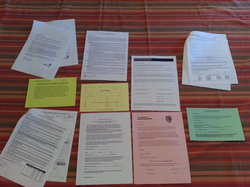 Our first day school paper work haul. Our first day school paper work haul. It was the first day of school today in East Penn, and with it came all the hope and excitement that comes with every new school year. I'm glad some things never change. But some other things? Well, let's just say we are loooong overdue for some changes. I was reminded of this when my newly-minted 3rd grader came home with his bulging stack of notices, forms, and paperwork for my wife and I to fill out. Here's the thing-- this pile of paper looks exactly the same as the pile I used to bring home when I was in the public schools well over twenty years ago. I counted no fewer than 7 different forms that require my signature, and 4 different forms that ask for my phone number. There is even one that asks me for my phone number in two different places! Not only do all these forms ask for the same information, it is all the same information I provided multiple times last year. And the year before. And the year before that. What gets me is that computers make all of this work outdated and unnecessary. The schools could easily collect all the information they need on a single form, one time. Once in the computer, this information could be shared quickly and effortlessly with the different teachers and programs that require it. Why is a large part of student record-keeping in our schools still handled as if computers had never been invented? The issue at stake here is more than just the hassle of filling out forms. Computerizing these records would save hundreds if not thousands of hours of teacher and staff time sending out, receiving, sorting, filing, and retrieving all these sheets of paper. This translates into more instruction time and less personnel costs. Not to mention a reduction in the printing budget. For new students, collect the information on one form. For returning students, print out last year's information for parents to review and update. Better yet, send the information by email (like the district already does with report cards) and ask for a simple email confirmation that the data is correct. Then print a single paper form for only those families who don't respond via email. These are not cutting-edge ideas that require the latest technology. They are commonsense suggestions to bring our schools more fully into the modern world. 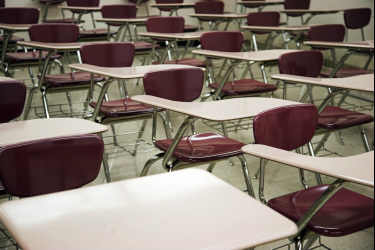 photo credit: dcJohn via photopin cc photo credit: dcJohn via photopin cc Most people agree that motivated, high quality teachers are the most important determining factor in excellent public education. But who makes up the school board is important too. A study by the Iowa Association of School Boards compared the characteristics of school board members in high performing districts with those in low performing districts. What they found was that the school boards themselves had an important impact on the quality of schools. More specifically, school boards that set high standards, were deeply knowledgeable about teaching and learning, created a supportive environment for teachers and staff, involved their communities, and used data to make decisions, produced far better results than those which didn't. There are real differences between the candidates for the East Penn school board on many of these dimensions. Who will set high standards? Who is knowledgeable about teaching and learning? Who will create a supportive environment for teachers and staff? Who will listen? Who has the most experience working with complex data? As you plan your vote in the election primaries one week from today, I hope you will consider how the candidates compare on these dimensions. 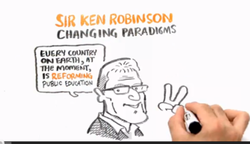 I've written a number of times about the need for schools to change in fundamental ways to meet the needs of today's society and economy. The information revolution poses significant challenges to some of the most basic ideas we all hold about public schools; ideas originally developed in the wake of the industrial revolution, a far different time. Ken Robinson made this point several years ago in a talk that has been viewed by millions since he gave it in 2006. Sadly, little has been done to address the issues he raises in the seven years since. The talk is well worth its 12 minutes, if you haven't seen it already (and don't be distracted by the controversial claims he makes about ADHD in the middle; they are not central to his main point).  Have you heard something like this before? "Schools are so inefficient. They are so poorly run," the complaint goes. And then, "if only schools were run like private businesses, things would improve." No! Public schools are not businesses. Nor should they be. And the model of private business is not appropriate for improving public education. There are lots of reasons for this, but let me just mention two of the most important: First, private business and public schools have fundamentally different goals. Businesses exist for the purpose of making a profit for their owners. Public education, on the other hand, exists for the purpose of providing a public good; something that everyone benefits from. Students benefit of course, but so do private businesses (through employees with job skills), homeowners (through higher property values), taxpayers (through lower criminal justice and social welfare costs) and society in general (through an educated citizenry). Second, private business owners do not face the same set of constraints that public schools do. For example, businesses can decide on their suppliers; they can determine the quality and quantity of the things they buy to go into their business. Not so in public education. A key "input" in public schools are children, and the schools must take as many children as there are in the community, with whatever skills or limitations they bring with them. Jamie Vollmer, a former businessman and attorney, makes this second point powerfully in a well-known essay entitled The Blueberry Story. Please read it if you haven't before (the story isn't much longer than this post). There are lots of things we can do to improve public education in our community. But trying to run the district as if it were a Wal-Mart, or Exxon, or even a local small business, is misguided and will do little to solve the problems the schools face. 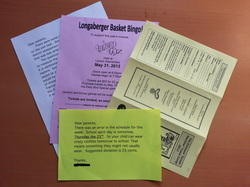 As every parent in the East Penn School district knows, our schools no longer provide students or parents with paper report cards. Instead, parents are expected to know when each grading period has ended, and log on to a special website to see grades. This policy is more than just silly: it is actively harmful to the mission of the district. Online report cards effectively make it more difficult for parents to keep informed about their children's progress, discouraging parental involvement. This is especially true for families who don't have reliable internet access, or are uncomfortable in the world of navigating websites, online passwords, etc. Yes, the district will provide a paper copy to such parents if they request it...but how many do? And why throw up these kinds of barriers in the first place? I'm told the answer is in cost savings. But today my son brought home four different printed pieces of paper from school, all dealing with mundane issues going on in the classroom and the district. This is an average haul for a day; sometimes there are more, sometimes there are less. Click on the image above to take a closer look them. Why not put these kinds of notices online too? The answer is simple: nobody would ever see them! But if notices about the school play, spirit day, and summer track camp are important enough to print and send home, on a daily basis, surely a student's grades are important enough to print and send home four times a year. |
Details
Categories
All
Archives
December 2017
|
||||||
